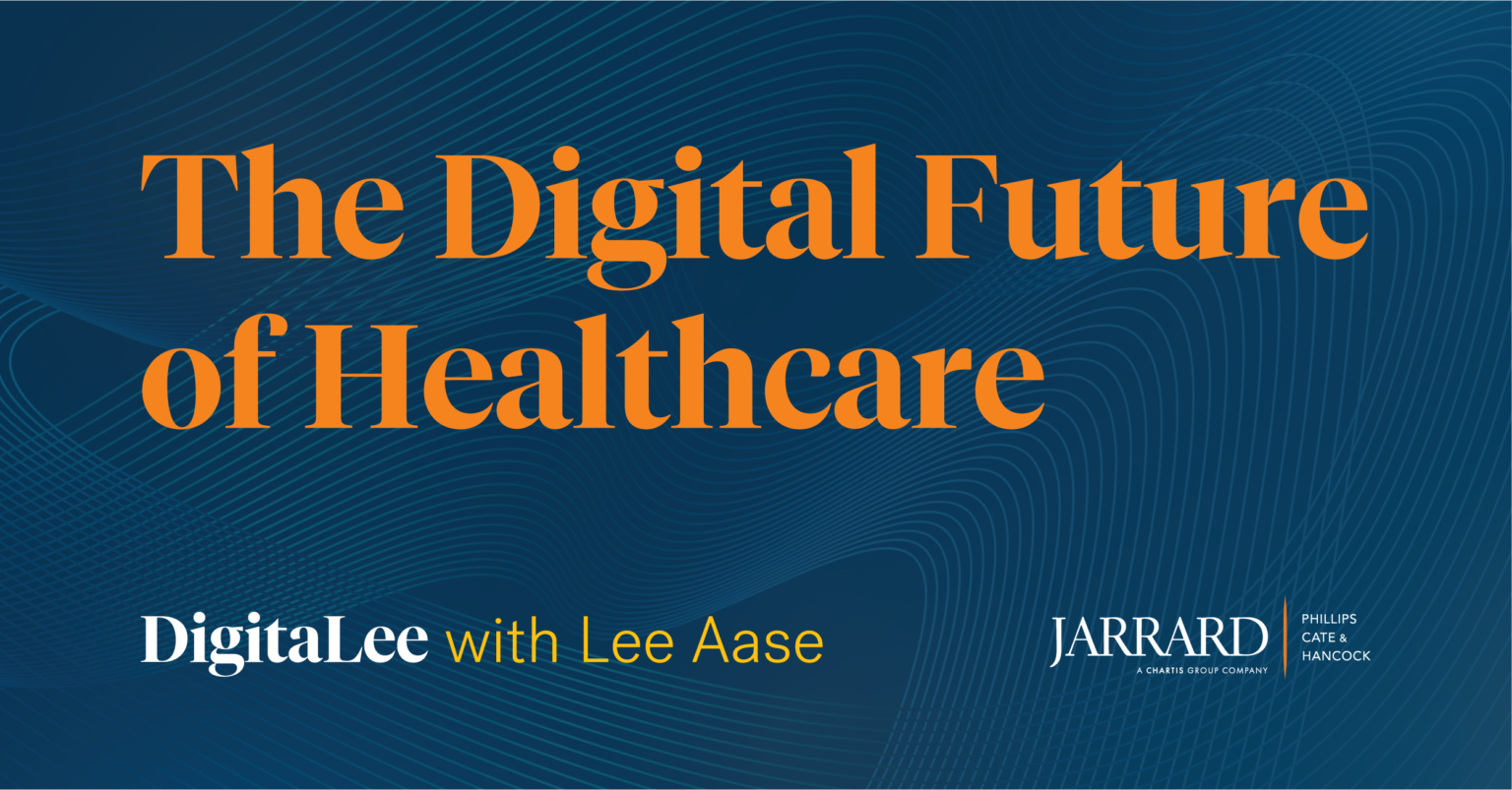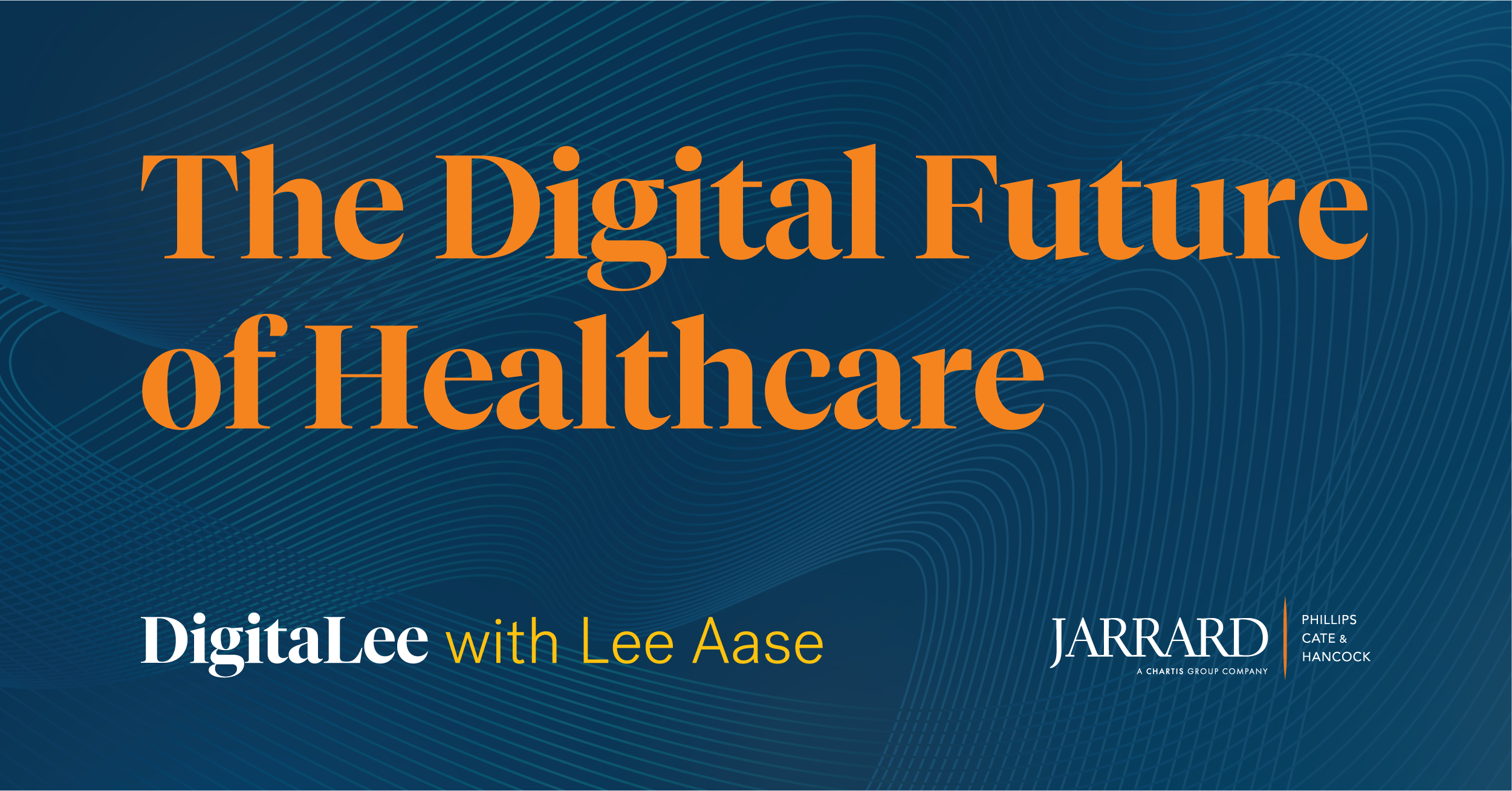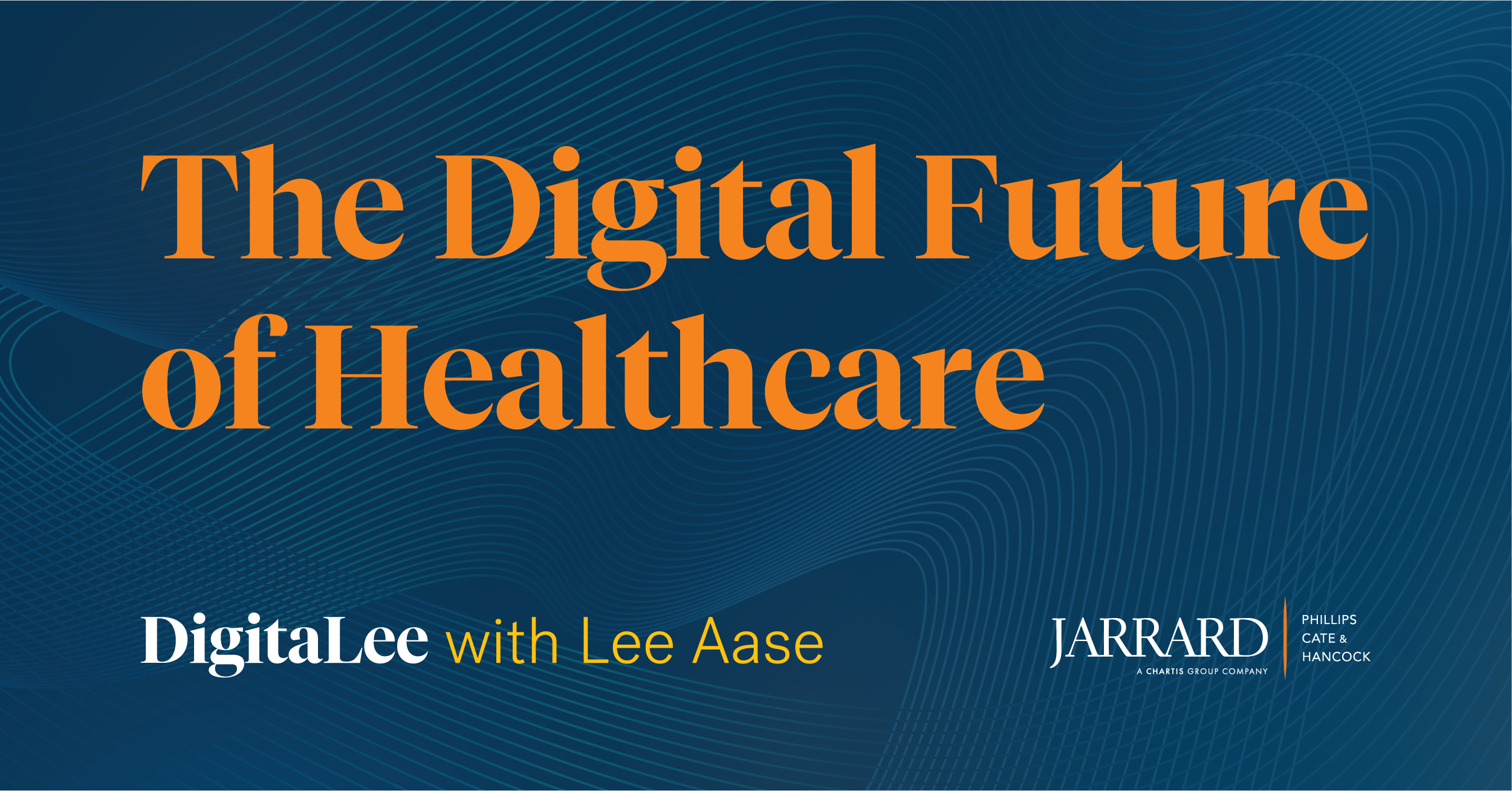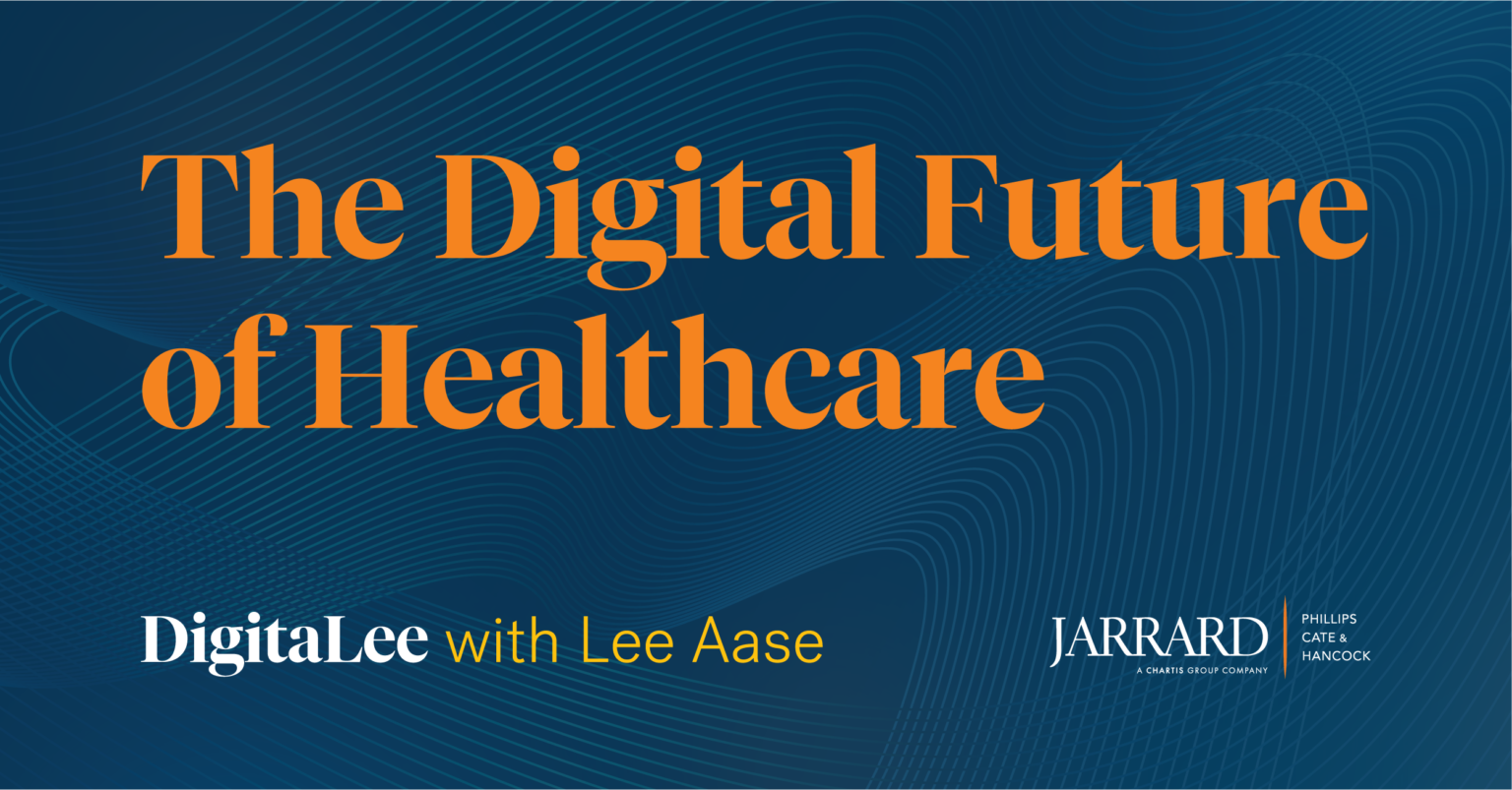
DigitaLee 12: Poetry vs Prose
This week on DigitaLee, David Shifrin and Lee Aase talk about a potential reset in the startup economy, some of the digital apps and therapeutics that are making care more efficient regardless of the economic outlook, and then notes for healthcare provider organizations looking to implement or partner with those digital health tools.
Listen and subscribe to the podcast, or read the transcript below.
Read the Transcript
David Shifrin: Well, it’s no surprise to anybody that we are likely, or at least potentially, staring down the barrel of an economic downturn, possibly recession. And that has huge implications for everybody, of course, but also the investment community because when money is cheap, when interest rates are low, it’s easier to invest. And so there’s an interesting article in Fierce Healthcare titled “Here’s why some VC investors say an economic downturn can be good for digital health.” The general point of this article is that when it’s harder to build something, better things will get built. It’s the cheap and easy stuff isn’t as likely to be built. And so I think it’s exciting and also challenging because it means that innovators and entrepreneurs and startup founders and all the rest, people who are looking to make change, they’ve got to work harder and really find that product market fit, make sure it’s sustainable and all that. But talk a little bit about, you’ve got so much experience in the startup world as well as the digital world. What do you think about this idea that a downturn may be helpful in resetting the market?
Lee Aase: Yeah. Oh I think it’s, I think it’s right on because it really does impose a discipline on the startups to be having a product that people are willing to pay for that is meeting a real need that they’re eager to have. And it’s not just built on fluff and hope and hype, given what the project that I’m personally involved in right now, we’re focused on providing real value to patients. And as I look at it, we have concerns about a downturn, but we’re also saying, if you’re a low cost provider of a good service in a down economy, that actually creates big opportunity.
Because if you’re able to do that and then to scale, that’s meeting a real need, people will need healthcare, they will need health-related services. That’ll be something they’ll be likely to prioritize.
And what’s remaining to be spent after the doubling of gas prices and all is something that will be probably disproportionately skewed toward healthcare. But so then it makes the value delivery proposition really all that much more important.
You know, you don’t want a downturn, you’d rather, you’d prefer there not be. But given that’s a reality, and I think it’s everybody’s pretty much saying it’s a foregone conclusion that this is going to happen, so you might as well embrace that and understand what the new terrain’s going to be like.
And that really is putting constraints on an enterprise, causes it to need to be much more resourceful and need to make sure that everything you’re doing is contributing toward value for the customer. And it’s like in poetry versus just prose, okay? Poetry puts a limitation on it, and that’s why poetry and music, songs, can be much more meaningful is because it sets rules around you, that in terms of how you have to present your thoughts and your ideas versus rambling on a podcast like this.
David Shifrin: That’s so interesting because somebody I was talking to a couple weeks ago used a similar analogy. He was actually talking about a wedding toast that he had heard, and he made the point about the difference between being contained or having a container, rather than a cage. And those can seem very similar, but they’re not. And the guy I was talking to referenced it and said it’s like poetry and prose.
Lee Aase: Yeah I mean, I’m about to have the sixth of my children get married at the end of July. And what I’ve done for the others is that the father of the bride, father of the groom always, often, gives a toast or gives a speech. I’ve always done a poem, you know, it shows some thought going into it and a caring, actually, about – not to hammer on anybody who doesn’t do poetry in their wedding toast – but it’s just a way of showing that, yeah, I spent some time thinking about this and so I think it’s that same way with an enterprise that those kind of constraints, those rules and the rules of cash flow, as well as profitability, are things that impose a discipline that will, that can be very constructive.
David Shifrin: So let’s focus specifically then, Lee, on some areas where it does seem that there’s great value. And you’re talking about being able to deliver care more efficiently and cost effectively.
And so as you and I were prepping for this, bouncing some articles back and forth about the rising value of digital therapeutics and mental health apps, and then you also sent over a couple of ideas around digital diabetes treatments.
Lee Aase: Yeah. Well, when you’re talking about the things that affect the healthcare system, diabetes and diabetes related illnesses are just massive in terms of the impact on mortality, on morbidity, on just the finances of the healthcare system. And so Virta health is one of those startups based out of San Francisco.
And they’ve had about 50% of their patients be able to reduce or eliminate medications and get blood sugar normalization through dietary intervention, but it’s a real, it’s a high touch by high tech kind of approach. At Indiana University, Dr. Sarah Halberg led the research on this, where they did, it’s not a randomized control trial, but it was a targeted intervention where they were able to take patients who had type 2 diabetes give them this app-based interaction where they’re getting coaching and support from professionals who are able to help them in the behavior change, and to give them advice and help them to make these changes. And when you look at the amount of money that’s being spent on diabetes, medications and complications of diabetes, there’s a reason why I think the last I saw was that the market valuation for Virta health was $2 billion.
And so it’s all…the point is there’s a lot of opportunity there and that’s one in particular that I’ve seen. Levelshealth.com is another really interesting one. It’s more on the…the idea behind it is providing a way for people who are interested in blood sugar control, interested in their metabolic health, to be able to get a continuous glucose monitor, which ordinarily is only prescribed for people with diabetes as a way of monitoring their blood sugar day to day.
But a lot of people are becoming convinced type 2 diabetes doesn’t happen overnight. And by understanding better how our bodies react to different kinds of foods, we can maintain better blood sugar control for a lifetime and avoid the type 2 diabetes.
David Shifrin: So it becomes proactive rather than responsive.
Lee Aase: And there’s a, they’ve set up really an elegant platform.
A couple weeks ago that I went and signed up on their site, they have a waiting list. Okay, you sign up and you’re on a waiting list, which seems really weird for a company that’s selling the ability to have continuous glucose monitors, but then I think the point of that is that it’s membership based. So there’s a couple hundred dollars annual membership fee for this, then you go through a health questionnaire and then they do have a physician or medical licensed medical professional who’s able to prescribe a continuous glucose monitor. And anyway, I just got notification that my unit is shipped and I’m going to get to use it, but they did a really…I think there’s some interesting parts of this, by having the waiting list, it does create a scarcity sort of a feel. Also helps them monitor or make sure that they can manage a really good experience, that they’re not going to get overwhelmed with it.
David Shifrin: Just considering what we were talking about earlier, I mean, if you’re going to do this, you’ve got to do it, you can’t just pull in a bunch of money and then grow and then realize that you can’t sustain it. This has to be done well.
Lee Aase: Yeah. And then I think the other part of it is, by creating that scarcity, once you sign up, then you’re on their list and you get emails, and they get educated about it. Because I could see how some people might have misgivings at first when they say, oh, there’s a membership and that’s before I even get a CGM. And so giving people a little time for it to marinate a little bit is like a sales funnel, an extended sales funnel, for this that is creating an aware, a better understanding of the model and how their system works. So by the time, you know, it was like last week I got the email saying you have a chance to actually get into this, now you can get off the waiting list and get into it. And I was ready to do it, but I also wanted to experience what this platform was like.
So that I could have a better understanding of what’s happening in these in these startups and how they are. Really I think it’s a really interesting way, and we’ll have a really high impact on people being able to take charge of their own health.
David Shifrin: Yeah. And again, so much of this and so much of digital therapeutics and digital health in general is avoiding problems before they become problems. and that lowers costs down the road. That improves the economic balance in healthcare and society in general, so it makes a ton of sense.
So then Lee, as you think about a potential reset in the market and providers of all types are always looking to partner implement new software solutions, digital options, to improve care delivery all the rest, what does the process look like for that right now to make sure that you’re improving the patient experience and delivery of care, keeping costs down and frankly, picking a solution that’s not going to vaporize in two weeks because they ran out of money?
Lee Aase: Yeah. So I think it’s important for the clinical folks to be really bought in on “this is something that will be good for patients.” This really makes sense, from the patient care perspective or from the prevention perspective that this is something that they believe in.
And then being able to evaluate it in the context of so what are the costs of this? Is this going to add to us being able to provide this kind of care? Where can it save us money and some of the other things that we’re doing that will enable us to deliver a better value?
And then yeah, right, looking at the financial situation with the company itself and saying, does this model look like something that is not going to be gone tomorrow? That it’s something that if we’re going to go to market with it with our patients, that this is something that’ll stand the test of time, or at least make it as far as we can tell. Like stand the test of time sounds way…first of all, it’s a cliche story about that. But that it will stand the test of the current turbulence. And that this is a company that is likely to be able to sustain the value and sustain the services to our patient.
David Shifrin: Cool. Thanks, Lee.
Lee Aase: Thank you. I always love this.
Subscribe to Jarrard Insights & News
"*" indicates required fields





